Table 3.
Summary of active immunopharmacotherapies developed for fentanyl abuse.
| Vaccine | Hapten structure | Carrier protein | Adjuvant | Route of administration | Vaccinations/overall time | Subjects | Main findings | References |
|---|---|---|---|---|---|---|---|---|
| 1 |
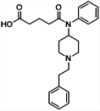
|
TT | Alum and CpG | SC | 3 injections (0, 2, 4 weeks) | Male Swiss-Webster mice | Single conjugate vaccine elicits high levels of antibodies with cross-reactivity for a wide panel of fentanyl analogs and protects against lethal fentanyl doses | Bremer et al. [123] |
| 2 |
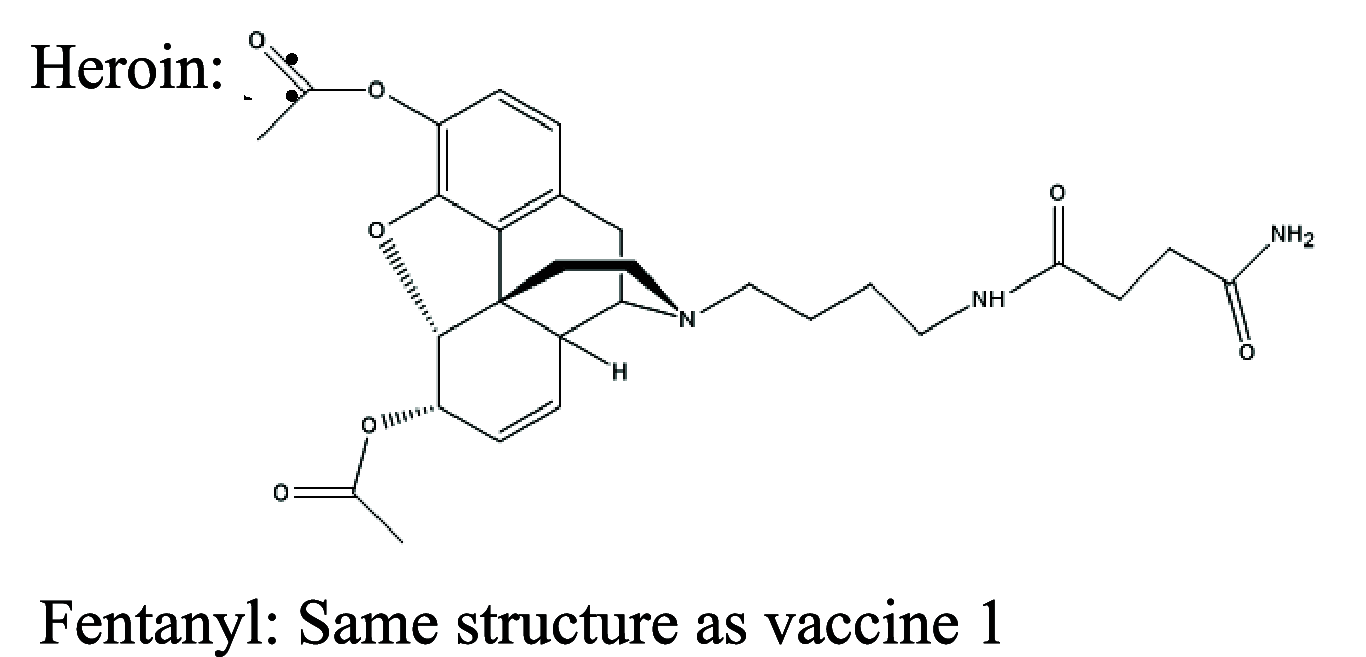
|
TT or KLH | Alum and CpG | SC | 3 injections (0, 2, 4 weeks) | Female BALB/c mice | Admixture vaccines sequester opioid drugs in blood and reduce fentanyl-induced antinociception | Hwang et al. [142, 143] |
| 3 | Same structure as vaccine 1 | TT | CpG and alhydrogel | IV | 3 injections (0, 3, 17 weeks) | Male and female Sprague-Dawley rats | Vaccination is very effective in preventing the binding of fentanyl to μ-opioid receptors in the central nervous system and reduces fentanyl-induced antinociception and its reinforcing effects | Townsend et al. [124] |
| 4 | Same structure as vaccine 1 | TT | Alhydrogel | IM | 6 injections (0, 2, 4, 9, 19, 44 weeks) | Adult male rhesus monkeys | The vaccine increases plasma fentanyl levels and reduces fentanyl-induced antinociception | Tenney et al. [133] |
| 5 |

|
KLH | Alum | SC | 3 injections (0, 2, 4 weeks) | Male BALB/c mice and male Holtzman rats | The vaccine reduces fentanyl-induced antinociception in hot-plate test, respiratory depression, and bradycardia over a range of cumulative subcutaneous fentanyl doses | Raleigh et al. [122] |
| 6 |

|
KLH | Alum and CpG ODN 1826 | IP | 4 injections (0, 2, 4, 7 weeks) | Female BALB/c mice | New vaccines developed from chemically contiguous haptens composed of both heroin- and fentanyl-like domains; they confer robust protection against heroin but attenuate protection against fentanyl | Natori et al. [141] |
| 7 | Same structure as vaccine 5 | KLH | Alum | IP | 3 injections (0, 3, 8 weeks) | Female A/J mice | Monoclonal antibodies generated in hybridomas from mice vaccinated with a fentanyl conjugate vaccine reverse fentanyl/carfentanil-induced antinociception | Smith et al. [135] |
| 8 |
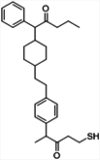
|
TT | ALF43A | IM | 4 injections (0, 3, 6, 14 weeks) | Female BALB/c mice | The vaccine induces high-affinity antibodies against fentanyl and its highly potent analogs and protects mice against fentanyl-induced antinociceptive effects | Barrientos et al. [129] |
| 9 |

|
KLH or CRM | Alum | IM | 4 injections (0, 14, 28, 29 weeks) | Male BALB/c mice and male and female Sprague-Dawley rats | Prophylactic vaccination reduces fentanyl- and sufentanil-induced respiratory depression, antinociception, and bradycardia; therapeutic vaccination reduces intravenous fentanyl self-administration | Robinson et al. [131] |
| 10 |

|
OVA | Alum | IP | 3 injections (2 weeks) | α1,3GalT knockout mice | The vaccine reduces psychoactive effects of fentanyl without addition of the immunostimulant CpG oligodeoxynucleotide | Wang et al. [132] |
| 11 |
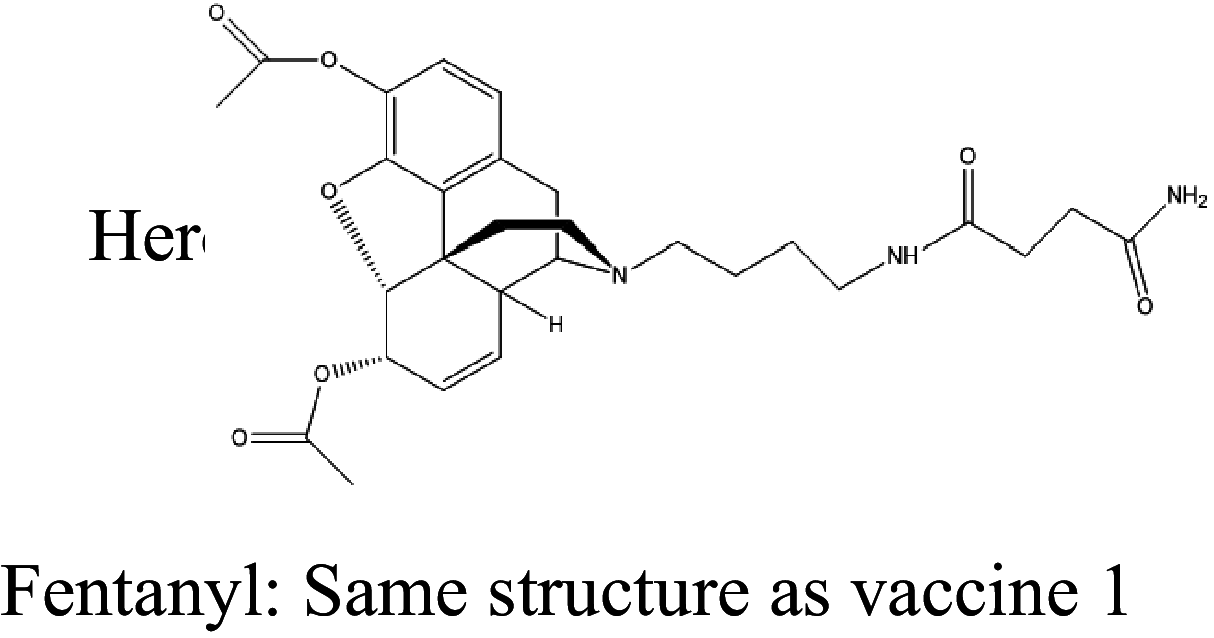
|
CRM or TT | Alhydrogel | IV | 4 injections (0, 14, 42, 70 days) | Male and female Sprague-Dawley rats | The vaccine attenuates thermal antinociceptive effects of fentanyl/heroin but has no effects on fentanyl/heroin mixture self-administration | Townsend et al. [139] |
| 12 | Same structure as vaccine 5 | KLH | Alum | IP | 3 injections (0, 2, 4 weeks) | Male and female BALB/c mice and male Sprague-Dawley rats | α-Fentanyl monoclonal antibodies generated from hybridomas via magnetic enrichment; passive immunization reduces fentanyl-induced antinociception, respiratory depression, and bradycardia | Baehr et al. [136] |
| 13 | Same structure as vaccine 1 | CRM | δ-Inulin | SC |
3 injections (2 weeks) in mice 4 injections (0, 1, 2, 4 months) in monkeys |
Male BALB/c mice and cynomolgus monkeys | A novel vaccine against heroin and fentanyl developed through the optimization of adjuvants and enhancing stability via lyophilization; it produces high-affinity antibodies and reduces fentanyl/heroin-induced antinociception | Blake et al. [137] |
| 14 |

|
CRM | Alum | IP | 4 injections (0, 2, 4, 7 weeks) | Female BALB/c mice | The vaccine with an optimized dual hapten produces antibodies with nanomolar affinities and blocks the analgesic effects of fentanyl-contaminated heroin | Park et al. [138] |
| 15 | Same structure as vaccine 1 | TT | Liposomal | IM | 4 injections (0, 3, 6, 14 weeks) | Female BALB/c mice | Combining TT-6-AmHap and TT-para-AmFenHap yielded an effective bivalent vaccine that ablates the effects of heroin and fentanyl | Barrientos et al. [140] |
| 16 | Same structure as vaccine 7 | CRM | dmLT or LTA1 | IM | 2 injections (0, 4 weeks) | Female BALB/c mice | dmLT or LTA1 adjuvants and mucosal delivery may be attractive strategies for improving the efficacy of vaccines against fentanyl use disorder | Stone et al. [128] |
| 17 | Same structure as vaccine 1 | CRM | Alum | IM | 4 injections (0, 3, 8, 15 weeks) | Rhesus monkeys | Fentanyl vaccine effectively reduces fentanyl vs food choice in rhesus monkeys | Townsend et al. [133] |
| 18 |
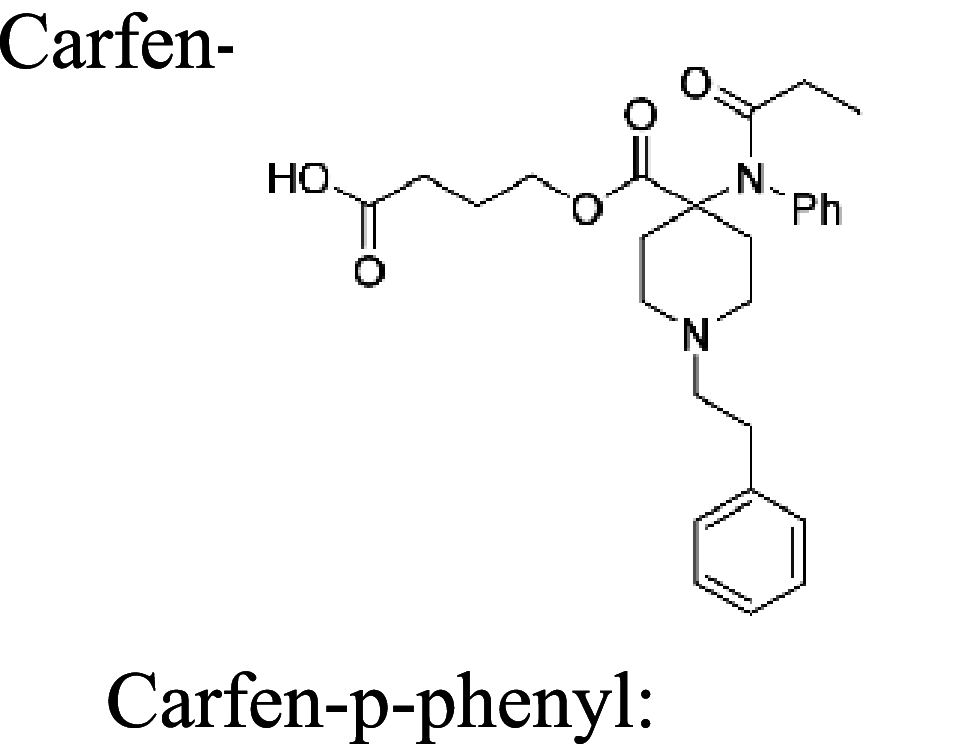
|
TT | alum and CpG | IP | 4 injections (0, 2, 4, 9 weeks) | Female Swiss-Webster mice | The two synthetic vaccines reduce carfentanil-induced antinociception and respiratory depression | Eubanks et al. [127] |
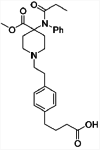
|
TT, tetanus toxoid; CpG, cytosine-phosphodiester-guanine oligodeoxynucleotide 1826; KLH, keyhole limpet hemocyanin; CRM, diphtheria toxin; OVA, ovalbumin; IV, intravenous; IM, intramuscular; SC, subcutaneous; IP, intraperitoneal.
